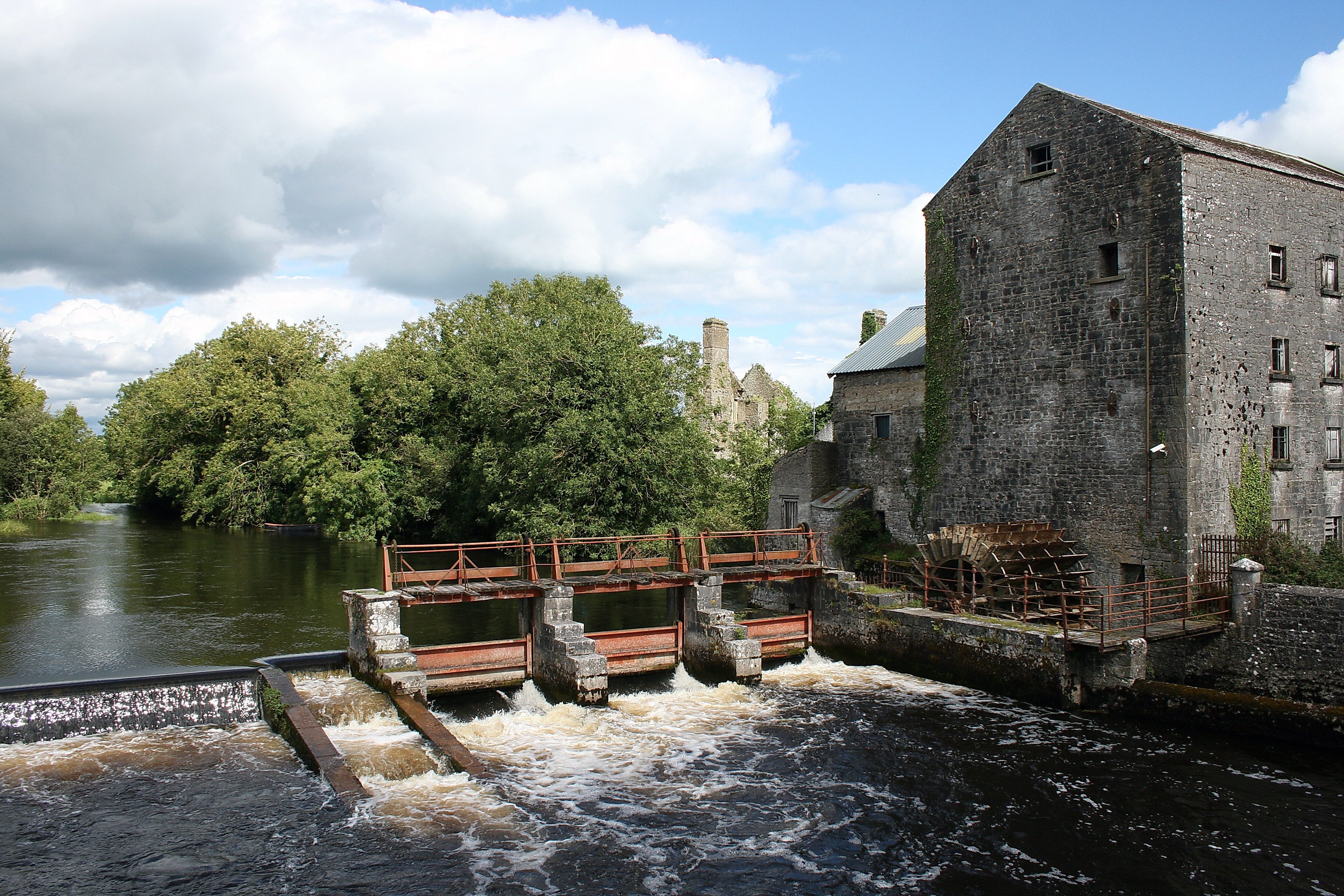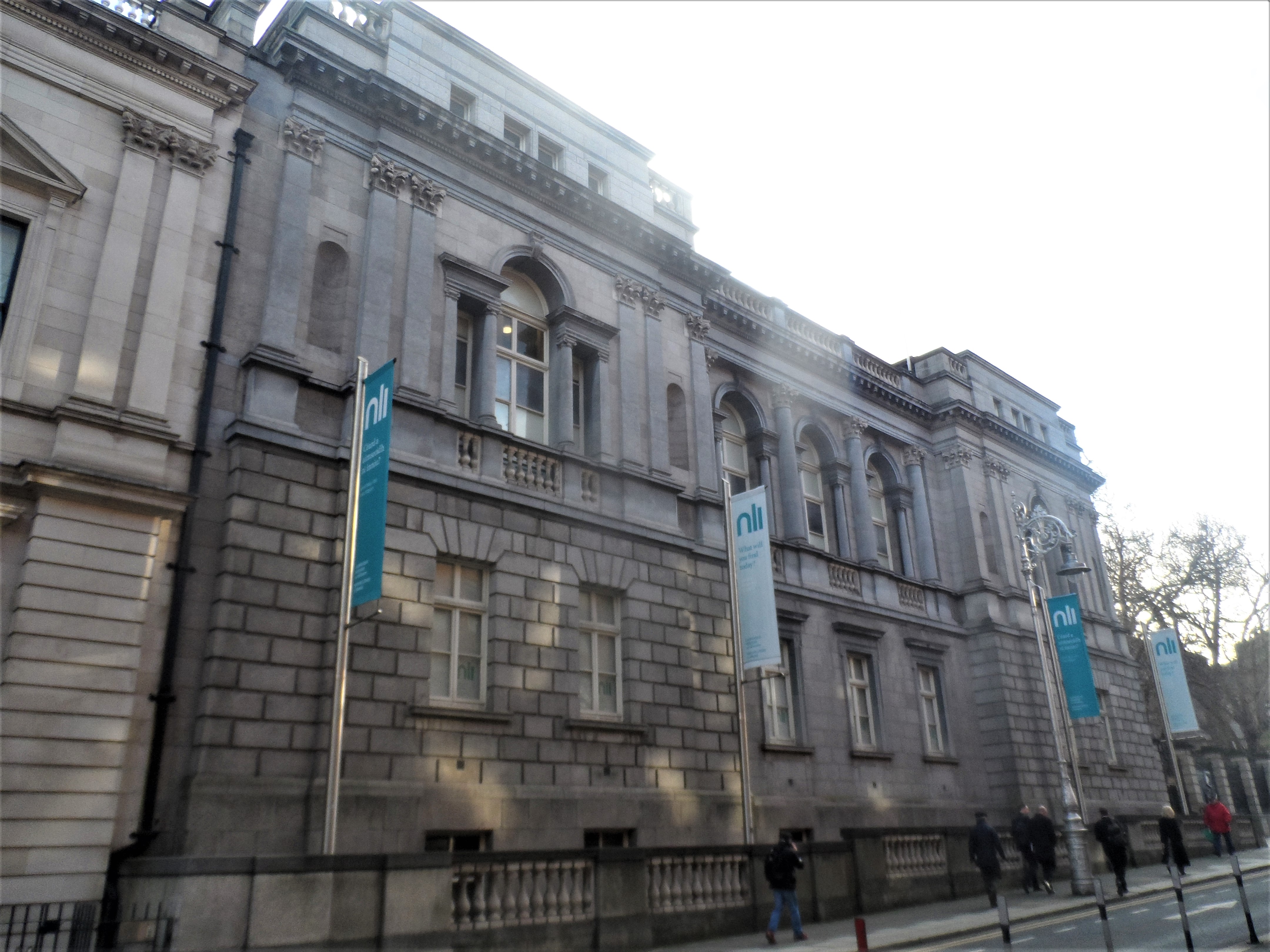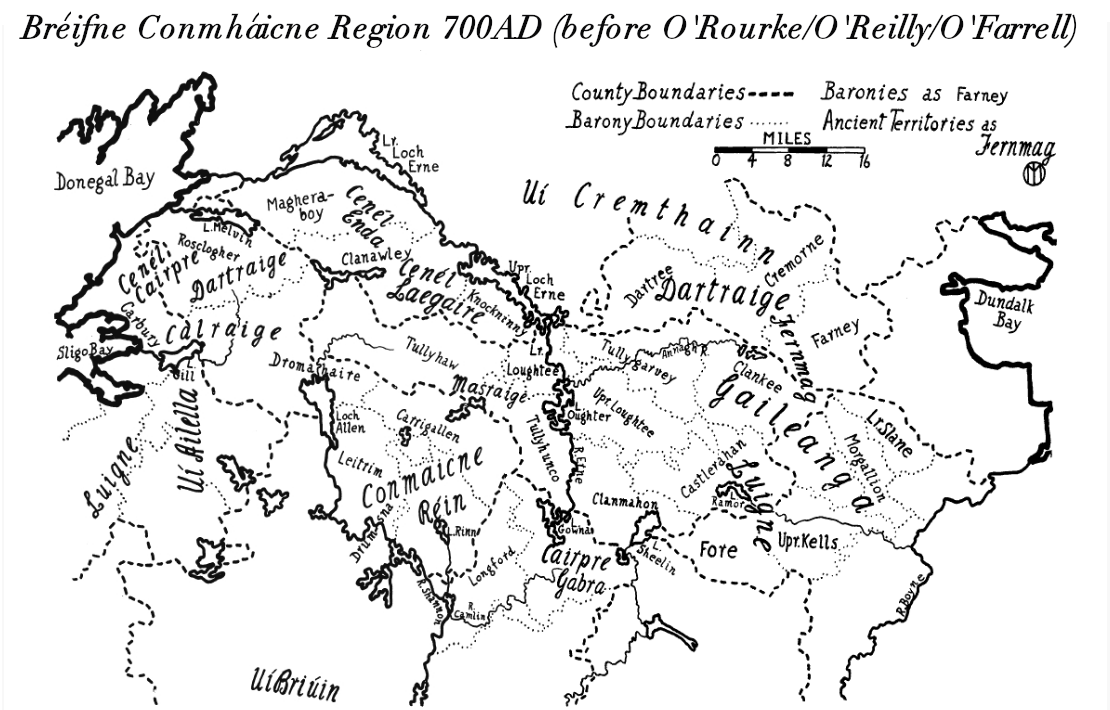|
Ruaidhri Ó Cianáin
Ruaidhri Ó Cianáin (died 1387) was an Irish historian. Described upon his death as "a learned historian without fault", "professor of Oirghialla in history", "chiefe Chronicler of the territory of Uriell". A member of the learned Ó Cianáin ( Keenan) family, Ruaidhri was the scribe and compiler of ''Dunaire Mheig Shamhradháin'' (''Book of Maguran''), also known as ''Leabhar Meig Shamradhain.'' In the possession for many centuries of the Ó Conor Don family of Clonalis, Castlerea, County Roscommon, but since 1972 National Library of Ireland MS G 1200. A colophon in it reads ''Ruaidri O Cianan do sgrib in duanairsea do Thomas mac Brian meic Dondchaid meic Gille na Naem'' ag Shamradhain("Ruaidhri Ó Cianáin who penned this poembook of Tomas son of Brian son of Donnchad son of Gilla na Naomh"). This Tomás was chief of Tulach Eachach (Tullyhaw, County Cavan, who died in 1343, so Ruaidhri was writing this ''dunaire'' in his lifetime. It is among the earliest post-Norman Irish ... [...More Info...] [...Related Items...] OR: [Wikipedia] [Google] [Baidu] |
Ó Cianáin
Ó Cianáin was the name of a Gaelic- Irish Brehon family. They were originally erenaghs of the parish of Cleenish, Lough Erne, but who had served for several centuries as historians to Mag Uidir of Fear Manach (2007, p. 437). The Annals of Ulster record the death of Giolla na Naomh Ó Cianáin, abbot of Lis Gabhail (Lisgoole), on 12 August 1345 (actually 1348). One of the family's most noted productions was Leabhar Adhamh Ó Cianáin, written in or about the 1340s by Adhamh Ó Cianáin (died 1373) by and for himself, and out of the book of his teacher, Seán Mór Ó Dubhagáin (died 1372). The Annals of the Four Masters cite the deaths of members of the family under the years 1348, 1373, 1387, 1400, 1405, 1459, 1569, 1483. The surname is anglicised as Keenan. See also * Adhamh Ó Cianáin, died 1373 * Eoghain Ó Cianáin (fl. 1540) harper and servant of Gerald FitzGerald, 9th Earl of Kildare * Tadhg Ó Cianáin/ Tadhg Óg Ó Cianáin, writer, died Rome, Nove ... [...More Info...] [...Related Items...] OR: [Wikipedia] [Google] [Baidu] |
Keenan (other)
Keenan (Cianán) is a male Ireland, Irish name which means "ancient, distant". ''Keenan'' is an Anglicisation of the Irish name ''Cianán'' which is a diminutive of ''Cian''. The Ó Cianáin clan (Keenan) were the traditional historians to the McGuire clan. Keenan is also a surname. Origins Recorded as O'Keenan and more usually Keenan, this is an Irish surname. Found mainly in the Ulster and northern counties of Fermanagh and Monaghan, it originates from the ancient pre 10th century Gaelic name O' Cianain meaning "The descendant of the faithful one" or similar. It may not have been entirely coincidence that the clan was famous throughout the Medieval Period for producing both high-ranking members of the church, and early historians, in several cases the same thing. The first recorded scribe was Adam O' Caianain, who was also the canon of Lisgool in Fermanagh. He is mentioned in the annals known as the "Four Masters" as being the historian to the famous Maguires of County Fermanagh ... [...More Info...] [...Related Items...] OR: [Wikipedia] [Google] [Baidu] |
County Roscommon
"Steadfast Irish heart" , image_map = Island of Ireland location map Roscommon.svg , subdivision_type = Country , subdivision_name = Ireland , subdivision_type1 = Province , subdivision_name1 = Connacht , subdivision_type2 = Region , subdivision_name2 = Northern and Western , seat_type = County town , seat = Roscommon , leader_title = Local authority , leader_name = County Council , leader_title2 = Dáil constituencies , leader_title3 = EP constituency , leader_name2 = Roscommon–Galway Sligo–Leitrim , leader_name3 = Midlands–North-West , area_total_km2 = 2548 , area_rank = 11th , area_footnotes = , population_total = 69,995 , population_density_km2 = auto , population_as_of = 2022 , population_footnotes = , population_rank = 26th , unemployment_rate = , blank_name_sec1 = Vehicle index ... [...More Info...] [...Related Items...] OR: [Wikipedia] [Google] [Baidu] |
National Library Of Ireland
The National Library of Ireland (NLI; ga, Leabharlann Náisiúnta na hÉireann) is the Republic of Ireland's national library located in Dublin, in a building designed by Thomas Newenham Deane. The mission of the National Library of Ireland is 'To collect, preserve, promote and make accessible the documentary and intellectual record of the life of Ireland and to contribute to the provision of access to the larger universe of recorded knowledge.' The library is a reference library and, as such, does not lend. It has a large quantity of Irish and Irish-related material which can be consulted without charge; this includes books, maps, manuscripts, music, newspapers, periodicals and photographs. Included in their collections is material issued by private as well as government publishers. The Chief Herald of Ireland and National Photographic Archive are attached to the library. The library holds exhibitions and holds an archive of Irish newspapers. It is also the ISSN National ... [...More Info...] [...Related Items...] OR: [Wikipedia] [Google] [Baidu] |
Tullyhaw
Tullyhaw ( ga, Teallach Eathach) (which means 'The Territory of Eochaidh', an ancestor of the McGoverns, who lived ) is a Barony in County Cavan in the Republic of Ireland. The area has been in constant occupation since pre-4000 BC. Located in the northwest of the county, it has been referred to as Cavan's panhandle. In 1579, East Breifne, then part of Connacht, was made a shire. The shire was named County Cavan ( ga, An Cabhán) after Cavan, the area's main town. The administration remained in the control of the local Irish dynasty and subject to the Brehon and Canon Law. In 1584, Sir John Perrot formed the shire into a county in Ulster. It was subdivided into seven baronies: *two of which were assigned to Sir John O'Reilly and *three to other members of the family; *two remaining, possessed by the septs of **McKiernan Clan and ** McGovern (a.k.a. ''Magauran'') The last one, Tullyhaw, encompassed the mountains bordering on O'Rourke's country, and was left subj ... [...More Info...] [...Related Items...] OR: [Wikipedia] [Google] [Baidu] |
County Cavan
County Cavan ( ; gle, Contae an Chabháin) is a county in Ireland. It is in the province of Ulster and is part of the Border Region. It is named after the town of Cavan and is based on the historic Gaelic territory of East Breffny (''Bréifne''). Cavan County Council is the local authority for the county, which had a population of 76,176 at the 2016 census. Geography Cavan borders six counties: Leitrim to the west, Fermanagh and Monaghan to the north, Meath to the south-east, Longford to the south-west and Westmeath to the south. Cavan shares a border with County Fermanagh in Northern Ireland. Cavan is the 19th largest of the 32 counties in area and the 25th largest by population. The county is part of the Northern and Western Region, a NUTS II area, and in that region, is part of the Border strategic planning area, a NUTS III entity. The county is characterised by drumlin countryside dotted with many lakes and hills. The north-western area of the county is spar ... [...More Info...] [...Related Items...] OR: [Wikipedia] [Google] [Baidu] |
Irish Language
Irish (an Caighdeán Oifigiúil, Standard Irish: ), also known as Gaelic, is a Goidelic languages, Goidelic language of the Insular Celtic branch of the Celtic language family, which is a part of the Indo-European languages, Indo-European language family. Irish is indigenous language, indigenous to the Ireland, island of Ireland and was the population's first language until the 19th century, when English (language), English gradually became Linguistic imperialism, dominant, particularly in the last decades of the century. Irish is still spoken as a first language in a small number of areas of certain counties such as County Cork, Cork, County Donegal, Donegal, County Galway, Galway, and County Kerry, Kerry, as well as smaller areas of counties County Mayo, Mayo, County Meath, Meath, and County Waterford, Waterford. It is also spoken by a larger group of habitual but non-traditional speakers, mostly in urban areas where the majority are second language, second-language speakers. ... [...More Info...] [...Related Items...] OR: [Wikipedia] [Google] [Baidu] |
Nollaig Ó Muraíle
Nollaig Ó Muraíle is an Irish scholar. He published an acclaimed edition of Dubhaltach Mac Fhirbhisigh's '' Leabhar na nGenealach'' in 2004. He was admitted to the Royal Irish Academy in 2009. Life and career A native of Knock, County Mayo, Ó Muraíle attended National University of Ireland, Maynooth where he was a postgraduate student enrolled for a PhD. He was Placenames Officer with the Ordnance Survey of Ireland 1972–1993. He was Reader in Irish and Celtic Studies at Queen's University Belfast to 2004 and Senior Lecturer at the Department of Irish, National University of Ireland, Galway from 2005–2014. He is married to Tresa Ní Chianáin and has two children, Róisín and Pádraic. He lives in Dublin. Ó Muraíle and Mac Fhirbhisigh In 1971, at the suggestion of Tomás Ó Fiaich, then Professor of Modern History at Maynooth, Ó Muraíle began work on Dubhaltach Mac Fhirbhisigh's '' Leabhar na nGenealach''. This was continued under the direction of Professor of Ol ... [...More Info...] [...Related Items...] OR: [Wikipedia] [Google] [Baidu] |
People From County Cavan
A person ( : people) is a being that has certain capacities or attributes such as reason, morality, consciousness or self-consciousness, and being a part of a culturally established form of social relations such as kinship, ownership of property, or legal responsibility. The defining features of personhood and, consequently, what makes a person count as a person, differ widely among cultures and contexts. In addition to the question of personhood, of what makes a being count as a person to begin with, there are further questions about personal identity and self: both about what makes any particular person that particular person instead of another, and about what makes a person at one time the same person as they were or will be at another time despite any intervening changes. The plural form "people" is often used to refer to an entire nation or ethnic group (as in "a people"), and this was the original meaning of the word; it subsequently acquired its use as a plural form of per ... [...More Info...] [...Related Items...] OR: [Wikipedia] [Google] [Baidu] |
14th-century Irish Historians
As a means of recording the passage of time, the 14th century was a century lasting from 1 January 1301 ( MCCCI), to 31 December 1400 (MCD). It is estimated that the century witnessed the death of more than 45 million lives from political and natural disasters in both Europe and the Mongol Empire. West Africa experienced economic growth and prosperity. In Europe, the Black Death claimed 25 million lives wiping out one third of the European population while the Kingdom of England and the Kingdom of France fought in the protracted Hundred Years' War after the death of Charles IV, King of France led to a claim to the French throne by Edward III, King of England. This period is considered the height of chivalry and marks the beginning of strong separate identities for both England and France as well as the foundation of the Italian Renaissance and Ottoman Empire. In Asia, Tamerlane (Timur), established the Timurid Empire, history's third largest empire to have been eve ... [...More Info...] [...Related Items...] OR: [Wikipedia] [Google] [Baidu] |
1387 Deaths
Year 1387 ( MCCCLXXXVII) was a common year starting on Tuesday (link will display the full calendar) of the Julian calendar. Events January–December * Elizabeta Kotromanic, mother of Mary, Queen of Hungary and the regent of Hungary, is murdered in prison by the Croatian rebels (her daughter is liberated on 4 June). * January 1 – Charles III of Navarre, Charles III ascends to the throne of Kingdom of Navarre, Navarre, after the death of his father, Charles II of Navarre, Charles II. * January 5 – John I of Aragon, John I succeeds his father, Peter IV of Aragon, Peter IV, as King of Kingdom of Aragon, Aragon and Kingdom of Valencia, Valencia, and forms an alliance with France and Castile. * March 11 – Battle of Castagnaro: Padua, led by John Hawkwood, is victorious over Giovanni Ordelaffi of Verona. * March 24–March 25, 25 – Battle of Margate off the coast of Margate: The Kingdom of England is victorious over a Kingdom of France, Franco-C ... [...More Info...] [...Related Items...] OR: [Wikipedia] [Google] [Baidu] |




_1938.jpg)
